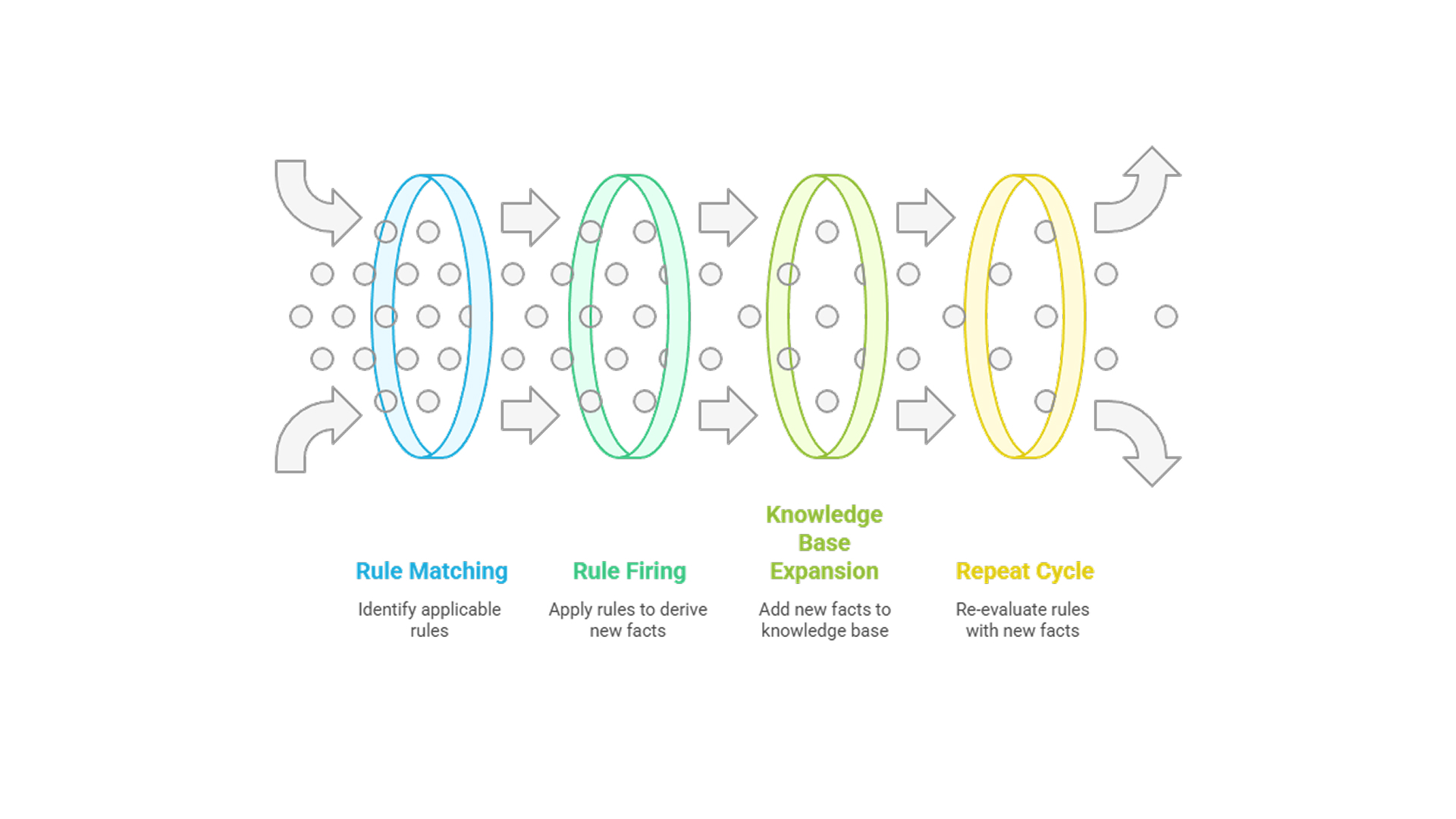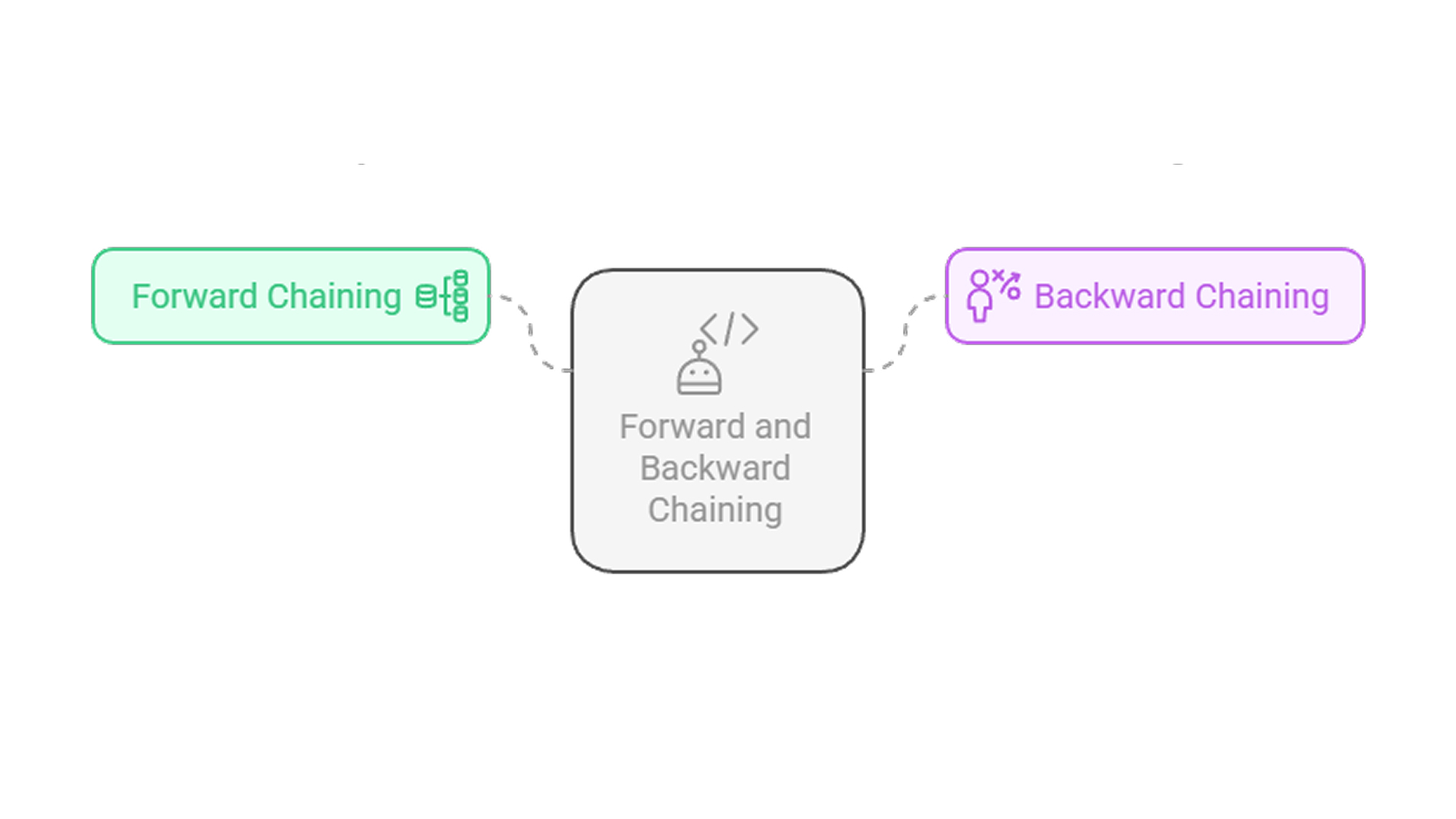What is Forward Chaining?

Team Thinkstack
May 29, 2025
Table of Contents
Forward chaining is one of the two core inference strategies used in AI. It’s a logic-based process that starts with known data and uses rules to uncover additional information until a conclusion naturally forms. This makes it a bottom-up, data-driven process, in contrast to backward chaining, which starts with a hypothesis and works backward to verify it.
At its core, forward chaining is about reasoning from what is known. Rather than beginning with a goal, it starts with current facts and uses logical rules to derive new facts, step by step. Rules usually take the form of “if-then” logic, when certain facts are true, specific results or actions logically follow.
This type of reasoning is useful in AI systems where outcomes are not predefined and must be discovered dynamically. It suits environments where data streams in continuously, and the system must react in real time. It allows the system to:
- Reason from raw, available data rather than requiring a goal.
- Adapt to new inputs and update its understanding dynamically.
- Handle evolving, real-time information in unpredictable environments.
- Scale to complex rule sets and knowledge domains without predefined paths.
That’s why forward chaining is widely used in automation, healthcare, diagnostics, real-time decision-making, and systems that respond to changing inputs, like smart homes, autonomous vehicles, industrial controls, and even chatbots that adapt replies based on user input.
Without forward chaining, an AI system may become rigid and reactive, unable to adapt to new facts, scale with complexity, or draw conclusions from real-time data.
Key characteristics of forward chaining:
- Data-driven, bottom-up reasoning: It starts with known information and uses rules to infer new knowledge.
- Breadth-first logic: All applicable rules are considered at each step before moving forward.
- Incremental and iterative: As new facts are added, they may trigger further rules, leading to a chain reaction of inferences.
- Dynamic and adaptive: It responds in real-time to new inputs, making it ideal for systems that operate in changing environments.
- Effective with large rule/fact sets: Useful in domains where many rules must be evaluated and where the goal may not be clearly defined at the outset.
Forward chaining relies on two essential components: the knowledge base and the inference engine.
- Knowledge base is a structured collection of domain-specific facts and logical rules. It holds the foundational information the system starts with and the conditions under which new knowledge can be inferred. The rules are often encoded using Horn clauses or definite clause forms of logical expressions, where if certain premises hold, then a conclusion follows.
- Inference engine is the part of the system that drives the reasoning process. It evaluates the current facts in the knowledge base, applies applicable rules, and updates the fact base with new conclusions. In forward chaining, it systematically searches for all rules whose premises match the current set of known facts. Once a rule matches the current facts, the resulting conclusion is added to the system’s store of knowledge. This cycle repeats until no more rules can be applied or a certain condition is met.
An inference engine is what transforms static knowledge into dynamic reasoning. It enables the AI system to make decisions, solve problems, and respond intelligently to new information.
How Forward Chaining Works

Forward chaining works through a systematic, fact-driven cycle. It starts with what the system already knows and applies logical rules to infer new facts. Each newly derived fact can trigger additional rules, creating a chain reaction of reasoning.
The process is breadth-oriented; the system evaluates all applicable rules at each step rather than following a single thread of logic. This gives it the flexibility to handle parallel conclusions, dynamic inputs, and complex rule sets, all without needing a predefined goal.
By relying on logic rather than guesses, forward chaining enables AI to reason autonomously and adapt as new information comes in.
1. Initialization
It begins with a starting set of facts stored in the system’s knowledge base.
2. Rule matching
The engine reviews every rule in the system, each structured with a condition (“if”) and a result (“then”), and checks if current facts meet the rule’s criteria. It reviews each rule to see if its conditions match the existing facts.
3. Rule firing
If a rule’s conditions align with what’s known, the rule triggers and produces a new result. The result is the derivation of a new fact or a conclusion, this could be a classification, an action, or a piece of inferred knowledge. The newly inferred fact is added to the knowledge base.
4. Knowledge base expansion
With each new fact added, they represent new logical positions from which more rules may now become applicable.
5. Repeat cycle
With each new fact added, the engine re-evaluates which rules now apply. Each time a new fact is added, the system reevaluates all applicable rules. This loop continues as long as new rules can be triggered by the growing body of known information.
6. Termination
The reasoning process ends when no more rules can be applied. This could mean all logical conclusions have been reached, or that the system has reached a specific condition or endpoint (if one is defined).
Forward vs. Backward Chaining

Forward chaining and backward chaining are the two core reasoning strategies used in rule-based AI systems, each suited to different types of problems. Backward chaining is a goal-driven, top-down method. It starts with a specific conclusion or hypothesis and traces backward through a chain of inference rules to check if the available facts support that result.
This selective approach is efficient when the outcome is clearly defined and the path to it is not overly complex. It’s particularly effective in domains like diagnostics, troubleshooting, and expert decision support, where the reasoning path is structured around verifying hypotheses.
Forward chaining, in contrast, is data-driven and exploratory. Rather than chasing a goal, it tracks what can be deduced from available facts and rule interactions. This makes it well-suited for open-ended, adaptive systems that must integrate new data continuously and infer multiple outcomes in parallel.
The choice between the two depends on the reasoning need; backward chaining is more efficient for targeted queries, while forward chaining is more effective when the system must discover, respond, and adapt without knowing the destination in advance.
Some advanced AI systems combine both methods using forward chaining to stay responsive to new data and backward chaining to verify specific goals, creating more robust, intelligent behavior.
Conclusion
Forward chaining is a vital reasoning strategy in AI, central to how intelligent systems draw conclusions from available facts. Its strength lies in progressing logically from data, adapting to new inputs, and generating insights as situations evolve. Like any method, it has limitations.
It can be computationally heavy, process irrelevant rules, consume significant memory, and depend on complete data. In cases with narrow goals or limited facts, its broad scope may lead to inefficiencies or multiple outcomes needing further validation. These challenges can be addressed through well-structured rules, efficient data handling, and hybrid reasoning models.